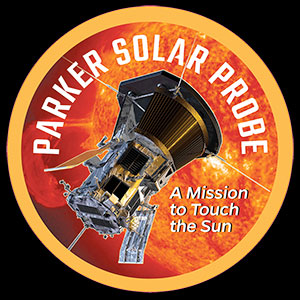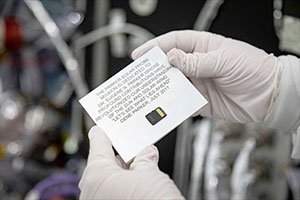August 12, 2018 — NASA's first mission to "touch the Sun" produced an artificial sunrise as it left Earth.
The space agency's Parker Solar Probe, which will fly into the Sun's atmosphere, or corona — traveling closer to the Sun than any spacecraft in history — began its unprecedented journey in darkness on Sunday morning (Aug. 12) atop a United Launch Alliance (ULA) Delta IV Heavy rocket.
Riding the bright glowing plume of the booster's three rocket engines, the probe lifted off at 3:31 a.m. EDT (0731 GMT) from Launch Complex 37 at the Cape Canaveral Air Force Station. Less than an hour later, the spacecraft separated from the rocket's third stage to begin a three-month trip to the Sun — by way of a flyby of the planet Venus in September.
Over the next seven years, the Parker Solar Probe will complete 24 orbits around the Sun and will fly by Venus seven times — each pass slowing the spacecraft so it can move closer to the Sun.
The Parker Solar Probe was designed to answer how the Sun's corona is heated and how the supersonic solar wind is accelerated — long-standing mysteries that have eluded the world's solar physicists, including the namesake of the mission.
"This is a mission that has been in the making for 60 years. We've had to wait so long for our technology to catch up with our dreams," said Nicola Fox, the project scientist for the Parker Solar Probe.
Closest and fastest
On its first pass, the Parker Solar Probe will reach closer to the Sun than any craft before.
The current record holder, the German-NASA Helios B, flew to 27 million miles (43.4 million kilometers) of the Sun on April 17, 1976. The Parker Solar Probe will come within 15.4 million miles (24.8 million kilometers) when it first encounters the Sun in early November 2018.
And from there, it will get closer. Much closer.
During its 24th and final-planned perihelion in June 2025, the Parker Solar Probe will pass just 3.8 million miles (6.2 million kilometers) above the Sun's surface.
On that orbit, as the spacecraft hurtles around the Sun, it will set another record for the fastest speed achieved by a human-made object. The Parker Solar Probe will travel at 430,000 miles per hour (692,000 kilometers per hour) relative to the Sun.
Helios B, by comparison, lumbered 221,232 mph (356,040 km/h) at its fastest, relative to Earth.
At its closest and fastest, the Parker Solar Probe's carbon heat shield will reach temperatures approaching 2,500 degrees Fahrenheit (1,371 degrees Celsius), while the spacecraft's interior remains near room temperature (about 85 degrees F or 30 degrees C).
"If you go outside in Florida, the Sun is hot. At four million miles, the Sun is very hot," said Andrew Driesman, project manager for the Parker Solar Probe at Johns Hopkins' Applied Physics Laboratory. "It took about 18 months to fabricate this heat shield and over a decade to develop. It is only four and a half inches thick, its got carbon sheets on either side and it only weighs 160 pounds."
The probe's two solar panels peek out from just behind the heat shield and are water cooled. The instruments that need to be exposed are made from titanium, zirconium, molybdenum and tungsten, the latter a metal with the highest known melting point.
Namesake
The Parker Solar Probe is named for Dr. Eugene Parker, the University of Chicago physicist who first predicted the solar wind's existence in a paper published at the dawn of the Space Age.
Parker, now 91, is the first living person to have a NASA spacecraft named after him.
"I was sitting in my office one day doing nothing, probably not useful, but it was work anyway, and the phone rang," Parker recalled on Thursday (Aug. 9) while at Kennedy Space Center in Florida for the launch.
Thomas Zurbuchen, NASA's associate administrator for science and a solar physicist, was on the line. He told Parker that the agency was thinking of naming the spacecraft after him and desired his permission.
"I was sort of stunned. I didn't know what to say," said Parker. "So I said, 'Yes.'"
Parker's 1958 paper, "Dynamics of the Interplanetary Gas and Magnetic Fields." was initially rejected for publication because the idea of a supersonic solar wind seemed too far-fetched. But his calculations that there was high speed matter and magnetism constantly escaping the Sun has since been proven through direct observation.
NASA's robotic missions are most often renamed after they are launched, once the probe is shown to be in working order. In this case, given Parker's work within the field and how closely aligned it was with the mission, NASA decided to honor him prior to launch, in order to draw attention to his contributions to heliophysics and space science. |
|

Launch of NASA's Parker Solar Probe on a United Launch Alliance Delta IV Heavy rocket on Aug. 12, 2018. (collectSPACE)

Parker Solar Probe, shown on July 16, 2018, mounted atop its third stage rocket motor with its fairing. (NASA/JHU APL/Ed Whitman)

Parker Solar Probe mission patch. (NASA/JHU APL)

A plaque dedicating NASA's Parker Solar Probe to Eugene Parker, its namesake. The memory card at bottom holds 1,137,202 names submitted by the public to travel to the Sun aboard the spacecraft, along with photos of Parker and a copy of his groundbreaking 1958 scientific paper. (NASA/JHU APL/Ed Whitman) |
